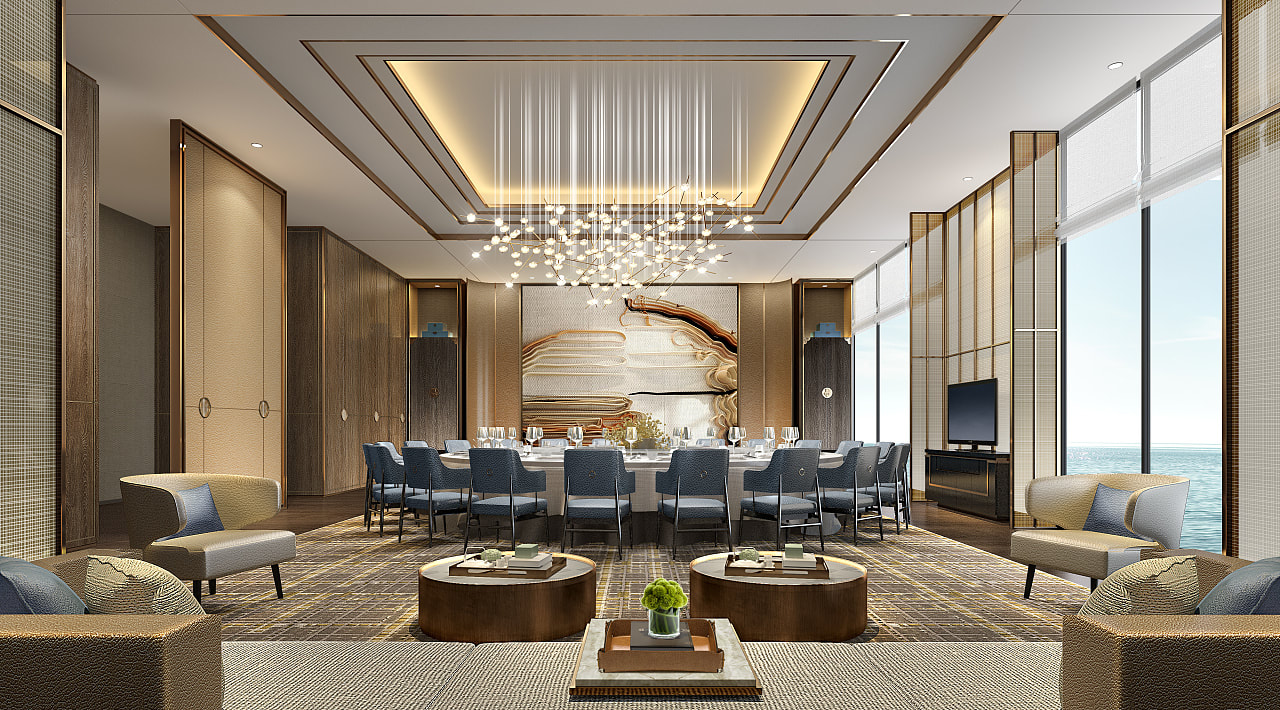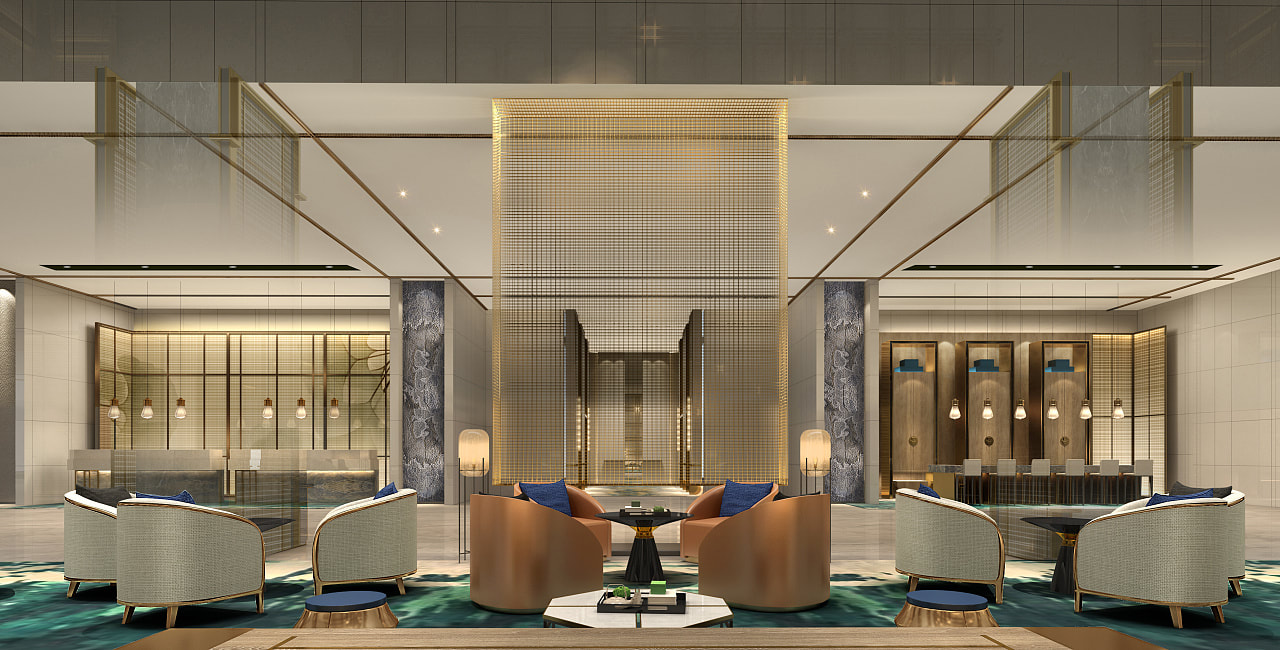Enhance Your Hotel's Guest Experience with Smart FF&E
It is not enough to fill a hotel with nice decor and seating options.
With careful curation of furniture, fixtures, and equipment (FF&E), an interior designer can create a unique and authentic atmosphere that keeps customers coming back for more.
Today’s hotel guests are sensitive to good interior design. In addition to liking or not liking the look and feel of a space, they respond to design elements that make them feel comfortable, inspired, happy, relaxed or excited, often without being aware of it. They also expect to find the comforts and conveniences they have at home when they are on the road.
Years ago a hotel was judged on location and cost. Nowadays, customers have access to a world of information and more options than ever before, making them more educated and particular about the products and services they buy. Location is important, but it’s not enough. Service and atmosphere count just as much because they add to the overall customer experience.
Hotel interior designers must do more than match wall colors with carpet and furniture. They need to create the kind of experiences that guests seek by designing spaces and implementing hotel design trends that are functional yet appealing, polished yet comfortable, exotic yet authentic.
Today’s hotel guests are sensitive to good interior design. In addition to liking or not liking the look and feel of a space, they respond to design elements that make them feel comfortable, inspired, happy, relaxed or excited, often without being aware of it. They also expect to find the comforts and conveniences they have at home when they are on the road.
Years ago a hotel was judged on location and cost. Nowadays, customers have access to a world of information and more options than ever before, making them more educated and particular about the products and services they buy. Location is important, but it’s not enough. Service and atmosphere count just as much because they add to the overall customer experience.
Hotel interior designers must do more than match wall colors with carpet and furniture. They need to create the kind of experiences that guests seek by designing spaces and implementing hotel design trends that are functional yet appealing, polished yet comfortable, exotic yet authentic.
Smart FF&E Interior Design
Designers can put together FF&E packages that are both attractive and affordable. Research shows that what guests remember the most about a hotel stay are the look of the lobby, the feel of their room and the quality of the customer service.
The lobby is where first impressions are made. The space and FF&E must be carefully adapted to the needs and wants of the clientele and to the property’s environment and local culture to give it a sense of place.
Next, the impression hotel rooms can have on guests can make or break a trip. FF&E can be used to provide a personalized experience that offers the comforts of home in a stylized atmosphere. Choosing high quality, commercial-grade goods, durable furniture with easily replaceable parts, stain-resistant fabrics and modern equipment also saves money in the long run.
Guests also like rooms that feel new. Every few years, hotels can refresh their look and feel by updating their FF&E.
The lobby is where first impressions are made. The space and FF&E must be carefully adapted to the needs and wants of the clientele and to the property’s environment and local culture to give it a sense of place.
Next, the impression hotel rooms can have on guests can make or break a trip. FF&E can be used to provide a personalized experience that offers the comforts of home in a stylized atmosphere. Choosing high quality, commercial-grade goods, durable furniture with easily replaceable parts, stain-resistant fabrics and modern equipment also saves money in the long run.
Guests also like rooms that feel new. Every few years, hotels can refresh their look and feel by updating their FF&E.
Role of the Interior Designer
Hotel interior designers are not merely decorators who arrange furniture in rooms. They combine furniture, fixtures and equipment creatively and effectively to produce spaces and atmospheres that guests admire and love and for which they are willing to pay premium rates.
For best results, interior designers should be involved from the beginning and work closely with architects and builders. The devil is in the details: even the greatest of projects depends on the success of the smallest elements.
For best results, interior designers should be involved from the beginning and work closely with architects and builders. The devil is in the details: even the greatest of projects depends on the success of the smallest elements.
FF&E Purchasing Evolution
In the past, purchasing FF&E for hotel interior design involved comparing the cost of different products and buying the least expensive. Hotel interior design mostly consisted of deciding where to put these things.
Purchasing has evolved throughout the years, becoming more sophisticated to include analysis of both the initial costs but also the potential costs of specifying the wrong products. Factors such as quality, durability, warranties, delivery times and other tangible factors. The artistic side of design, on the other hand, is not as tangible and cannot be similarly measured. However, it is just as important to invest in design elements that please guests and provide the kind of experiences they will seek to repeat.
Purchasing has evolved throughout the years, becoming more sophisticated to include analysis of both the initial costs but also the potential costs of specifying the wrong products. Factors such as quality, durability, warranties, delivery times and other tangible factors. The artistic side of design, on the other hand, is not as tangible and cannot be similarly measured. However, it is just as important to invest in design elements that please guests and provide the kind of experiences they will seek to repeat.
FF&E Design Tips
To make your hotel stands out from the rest while staying on budget, check out the following tips:
1. Design a magazine-worthy lobby
The lobby sets the stage for the guest experience. Design a great focal point or go for a wow factor that will make a great first impression, thrill guests and score points with them.
2. Make it comfortable and inviting
Besides being attractive and functional, a hotel lobby needs to be welcoming to guests. Choose unique, interesting accessories, high-end upholstered chairs and sofas and accent tables with surfaces made of durable materials such as marble or quartz.
3. Accessorize well
Accessories used to be an afterthought, but today they are used to enhance the atmosphere, personality and appeal of the property. The accessories complete a space. It can feel lifeless and bland until accessories are brought in.
4. Mind the corridors
Going up and down corridors is part of the hotel experience. Use lighting, ceiling fixtures, carpeting, wall textures, plants, artwork, and mirrors to enhance the guest experience in these spaces.
5. Aim to dazzle
Strategically use design elements such as accent furniture, artwork, granite surfaces and striking bathroom fixtures, to add pizzazz to a guest room and make it memorable for travelers.
1. Design a magazine-worthy lobby
The lobby sets the stage for the guest experience. Design a great focal point or go for a wow factor that will make a great first impression, thrill guests and score points with them.
2. Make it comfortable and inviting
Besides being attractive and functional, a hotel lobby needs to be welcoming to guests. Choose unique, interesting accessories, high-end upholstered chairs and sofas and accent tables with surfaces made of durable materials such as marble or quartz.
3. Accessorize well
Accessories used to be an afterthought, but today they are used to enhance the atmosphere, personality and appeal of the property. The accessories complete a space. It can feel lifeless and bland until accessories are brought in.
- Choose contemporary and transitional lamps with white or off-white shades.
- Use fabrics to add luxury and plants to bring in the outdoors and improve air quality.
- Incorporate artwork that reflects the hotel’s brand—local or international, natural or industrial, formal or casual, cosmopolitan or rustic.
4. Mind the corridors
Going up and down corridors is part of the hotel experience. Use lighting, ceiling fixtures, carpeting, wall textures, plants, artwork, and mirrors to enhance the guest experience in these spaces.
5. Aim to dazzle
Strategically use design elements such as accent furniture, artwork, granite surfaces and striking bathroom fixtures, to add pizzazz to a guest room and make it memorable for travelers.
As a leading hospitality FF&E (furniture, fixtures and equipment) manufacturer in China for over 20 years, Bestar Hospitality customizes fine casegoods and upholstered seating for hotels, senior living, student housing, restaurant,apartment and more.

